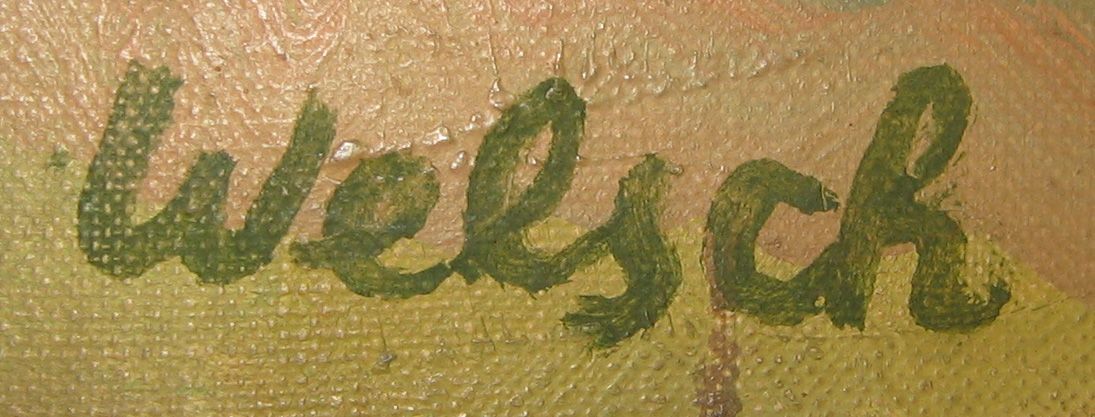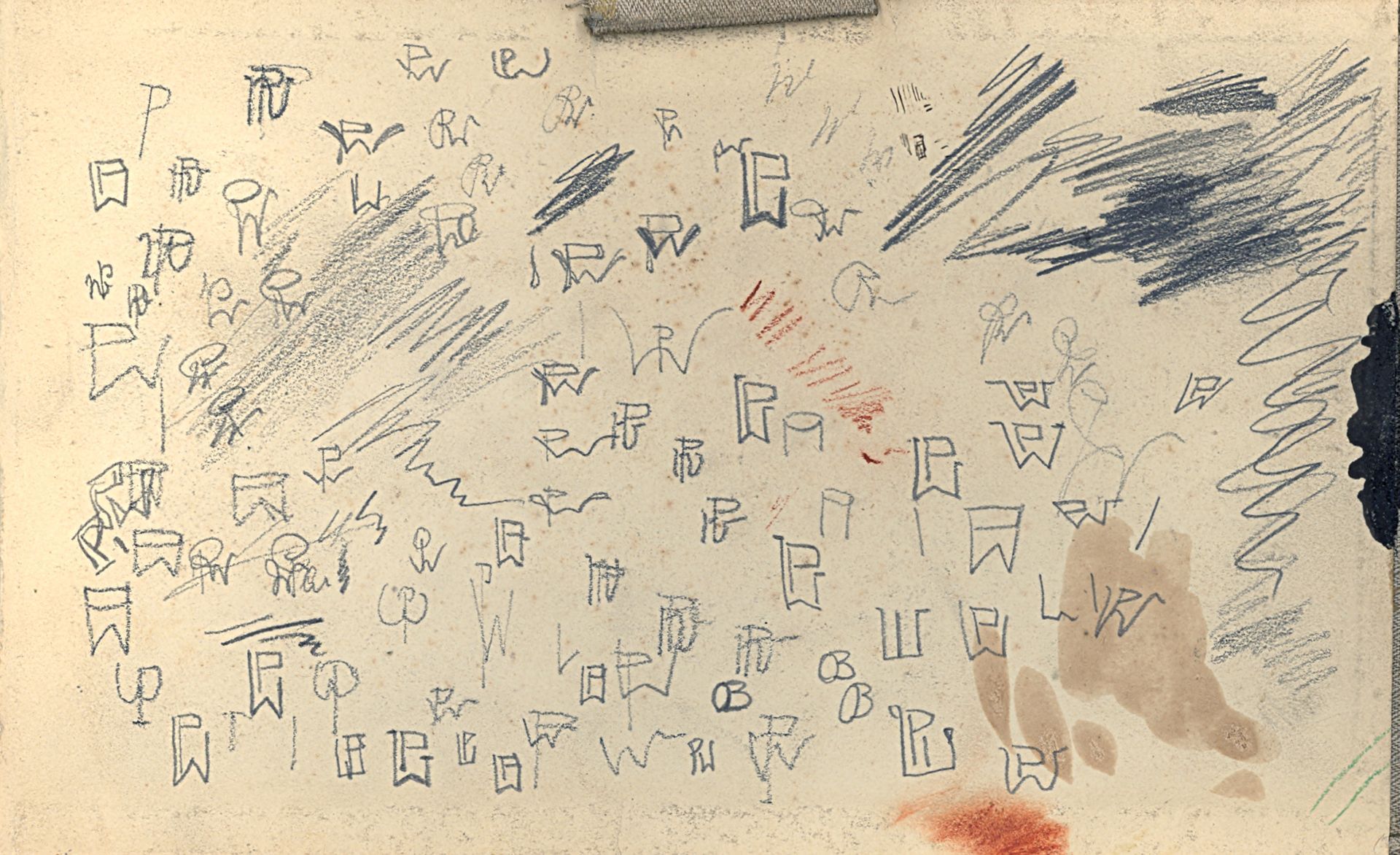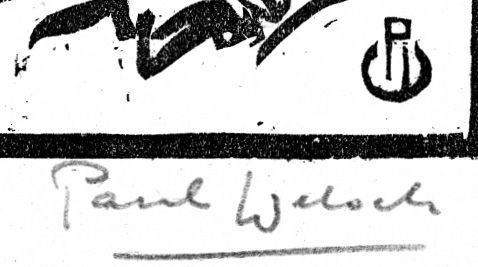SIGNATURES

Until around 1924, Paul Welsch signed his paintings by hand. The signature may therefore vary but is generally in print or in capital letters. Here is a signature from 1914.

We more commonly encounter the following signature for paintings from this period.

After 1924 we usually find this signature made most of the time using a stamp, which explains why it is consistent.

The signature opposite is to be found on the mural of the hotel school of Strasbourg (today Fustel de Coulanges secondary school).

During the war (1939-1941), the works were often signed "Velche" to erase the Germanic origins of the name Welsch. This mainly concerns drawings, watercolors elaborated in the oflags, the artist having hardly had the possibility of painting oils. The signature opposite is taken from a stained-glass window designed at this time.

In the sketchbook made in Hanover in 1907, Paul Welsch is looking for a signature.

These attempts are found in the first engravings in stylized shape. The Viaduct is an example under which Welsch has specified his name in pencil.

The signature can be summed up with the single W of Welsch. The artist thus signs the engraving of his Self-portrait of 1915.



Lithographs and watercolors are in principle signed in pencil, initially with his first name, later just with his last name. Here are three examples: first the signature of the engraving My father from 1917, then a watercolor from 1921, finally another one from 1952.

